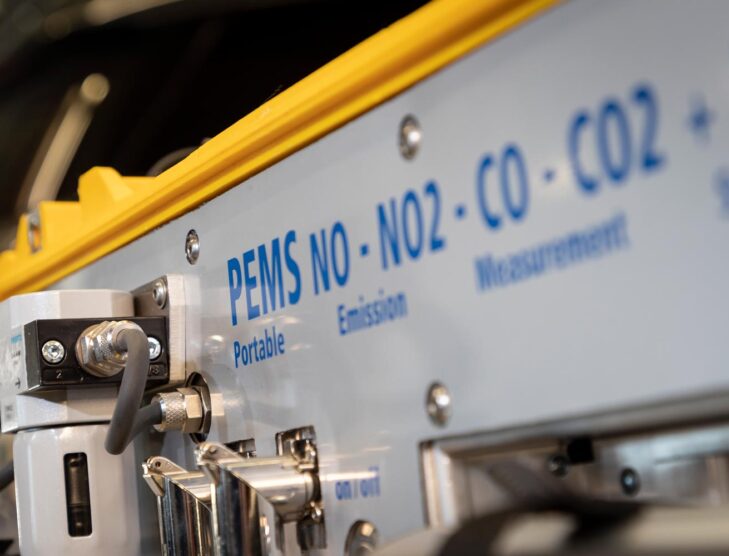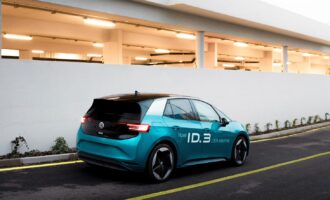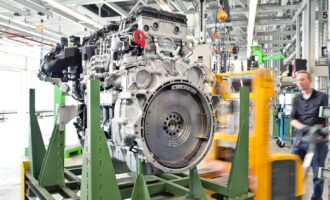
Will China follow the next European emissions standard?
Over the past couple of decades, China has implemented multiple vehicle emissions regulations. However, efforts to curb air pollution have been offset by substantial growth in the vehicle population and urban air quality has suffered as a result. China’s vehicle fleet is approaching 300 million cars, with annual sales of 25 million. Electric vehicles accounted for only 1.3 million sales in 2020.
China VIA is the most recent emissions standard in the East Asian country. The new standard was introduced at the beginning of 2021, following a six-month delay due to the Covid-19 pandemic, and is expected to deliver significant improvements in traffic-related pollution. Hot on the heels of this most recent regulation, China VIB, the second phase of China VI, is expected to launch in 2023.
The gold standard in emissions regulation
Many countries around the world have followed Europe’s lead, adopting Euro emissions standards, or closely mimicking their regulations. China VIA legislation is similar to Euro 6. European emissions standards have been seen as the gold standard in emissions regulation, comprehensively covering the main pollutants, says Keith Howard, strategic technology manager at Lubrizol Additives, based in Hazelwood in the United Kingdom. Howard is responsible for the emissions portfolio at Lubrizol Additives, monitoring emissions legislation and determining the implications for Lubrizol technologies.
Since the introduction of real driving emissions (RDE) testing, Euro standards have demonstrated a large positive impact on tailpipe emissions, says Howard. He was a recent guest in F+L Webcast, a monthly podcast hosted by F&L Asia’s Editor-in-Chief Vicky Villena-Denton. An automotive engineer by background, Howard joined Lubrizol in the early 1990s as a test engineer. He has since undertaken a variety of roles at Lubrizol, including five years in Shanghai as OEM group manager for Asia Pacific.
China VIB will be technology neutral
When China VIB is fully implemented, it will be the most stringent emissions legislation in the world, says Howard. China VIB lowers limits for existing pollutants and new pollutants. In many cases, limits are more stringent than Euro 6. In some instances, limits are half of those set in Euro 6. As with legislation in most parts of the world, the key pollutants are nitrogen oxides (NOx) and particulates. China VIB introduces particulate number limits as well as limits for particulate mass.
China VIB will also be technology neutral. The limit on particulates applies to both port fuel-injected engines and direct-injected engines whereas in Europe it only applies to direct-injected engines. Countries that have previously looked towards Europe for guidance could potentially look to China’s legislation moving forward, suggests Howard.
The introduction of RDE testing brings China up to date with the latest legislation in Europe. RDE involves road testing with portable emissions measurement systems (PEMS) so that pollutants are measured under the most realistic conditions possible. The range of temperatures and altitudes within China VIB are greater than Euro 6. A combination of tight limits and wide RDE conditions means compliance will be more difficult. Particulate filters will be required on virtually all cars, even hybrids, says Howard.
Emissions durability requirements are another noteworthy component of China VIB regulations. OEMs will need to prove emissions will stay low for up to 200,000 kilometres (in passenger cars), significantly longer than the 160,000 kilometres specified in Euro 6. While much of the focus seems to be on passenger car restrictions, China VIB also includes heavy-duty legislation and addresses concerns around exhaust emissions of nitrogen oxides (NOx) from diesel engines. NOx is of particular concern at lower temperatures, says Howard.
Limits that are half of the already arduous Euro 6 standards are going to be a real challenge. Though, Howard notes that there are cars in Europe that already achieve emissions performance that is a fraction of the limit. Consistent enforcement has not been a strong point in China’s emissions legislation in the past, although that is changing, says Howard. The Lubrizol representative highlighted sophisticated emissions technology, including remote sensing stations, and data from the vehicle’s onboard diagnostic system being monitored regularly for compliance purposes rather than just to diagnose problems.
Lubricant’s role will be more important under China VIB
Tighter emissions legislation in China is not simply a challenge for automakers. Traditional functions of lubricants — preventing wear in key areas such as the cylinders and valve trains and keeping the engine clean under extreme temperatures — will become more important than ever to ensure emissions stay low. Low emissions for the total useful life of a vehicle is not possible without high-quality, low-emission fuels and lubricants, says Howard. We need to supply very high-quality base stocks and aftertreatment compatible lubricants, he says.
High-quality lubricants come at a higher cost. Committing users to a rapid improvement in lubricant quality will be challenging. This also presents a major opportunity to drive high-value lubricants into the China market over the next few years, says Howard. Most of the Chinese market has adopted American API or ILSAC lubricant specifications. Though, there is an increasing adoption of European standards, particularly low ash lubricants, alongside universal gasoline particulate filter adoption in passenger cars, he says.
Euro 7 limits and tests expected soon

In Europe, the consultation period for Euro 7 was completed earlier this year. Limits and tests are expected to be finalised by the end of 2021, before the specification goes through the legislative process in the European Commission. Howard expects Euro 7 to be fully implemented in the 2026 to 2028 timeframe. It is anticipated that Euro 7 will incorporate an expansion of RDE conditions and will extend emissions durability. In China, thoughts have not yet turned to the next phase of emissions standards beyond China VIB.
China will likely follow Euro 7. Though, they may adopt some of the very stringent legislation being proposed in California on the heavy-duty side, says Howard. Increasing specification expertise and experience in China may also mean parts of the next legislation will be unique to China’s operating conditions.
Future emissions standards may go beyond the tailpipe
For now, emissions legislation is purely focused on what comes out of the tailpipe. Future standards may include emissions from other parts of the vehicle — such as brakes and tyres. In particulate filter-equipped vehicles more particulates are coming from brakes and tyres than from the tailpipe, says Howard. It is yet to be determined whether Euro 7 will incorporate emissions beyond the tailpipe — which are much more difficult to quantify. Total lifecycle emissions — “from well to wheel” — is something that Lubrizol is very keen to see included in future regulation, says Howard. A lot of carbon dioxide and other emissions are embedded in the manufacturing of electric vehicles, especially in the battery pack, he says.
To listen to the entire episode visit www.fuelsandlubes.com/podcasts.







